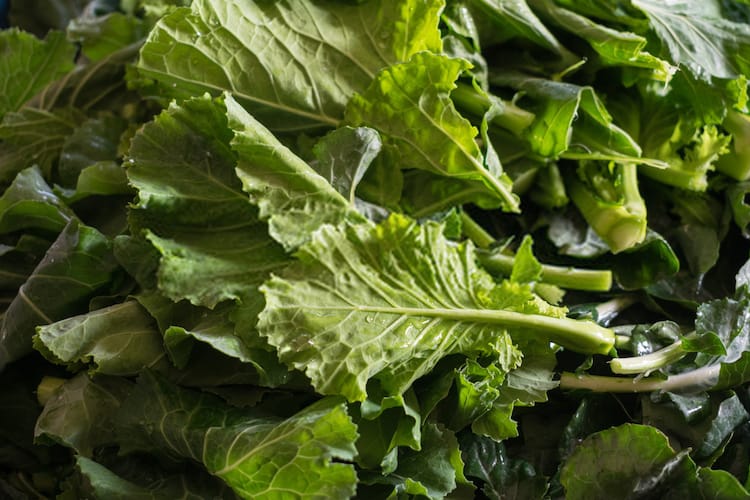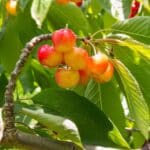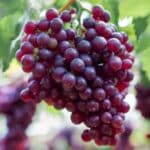Turnips are versatile vegetables that are suitable for home gardens. They are mostly grown for their flavorful, highly nutritious edible leaves and turnip roots vegetables.
What's unique about this cool-weather loving vegetable is that they mature quite rapidly in an expansive range of soil or containers. And by planting one vegetable, you can harvest two garden products.
However, you need to know when to harvest turnip greens and the right harvesting technique to get the best of these nutritious greens.
There are different varieties of turnip and uses, from potatoes substitutes to side dishes. But the best time to harvest turnip greens depends on the growing conditions and seasons.
Read on to find out more!
When to Harvest Turnip Greens
Turnips are cold-season tender vegetables with botanical name brassica rappa. They are members of the brassica family. These are greens that thrive well in moderate climates with cold nights like in fall or spring and avoiding hot climates like during summer.
They are fast-growing biennials, usually planted as annuals by growers or gardeners. It is best to plant turnip seeds in late summer or spring because they are generally softer and tastier than spring costs, and there are reduced pest infestations.
Under the right growth conditions, turnips multiply, and full germination is usually noticed in a few days. Within a month of planting it, it reaches full maturity, and its leaves are ready to be picked. And within the second month, the roots are ready to be harvested.
There are many varieties of turnip to grow, and each of them has a little difference in their due dates. However, when to harvest turnips green is dependent on your preference.
Healthy, firm large bulbs or the soft, tasty young roots, all your choice still the features displayed when matured remains the same.
Read Also: When to Pick Banana Peppers
How to Harvest Turnip Greens

Things you will need to harvest turnip greens:
- Pruning shears or gardening scissors
- Bags or paper envelopes
Turnip greens are highly nutritious and versatile vegetables. They can be harvested from a wide variety of turnip, but this will hinder root production.
There are varieties of turnip that are grown explicitly because of the large number of greenheads they produce and growers plant this variety just for harvesting turnip greens.
There are several procedures for harvesting turnips. Some are drawn and packed together in a bunch retaining its leaves and stems.
This method is best fitted for turnips with a diameter of about 2 inches. While the topped ones are topped, which simply means the green leaves were picked out, they are harvested when 3 inches in diameter.
Always make sure your turnip greens are ready to be harvested. Harvest turnips when they are large enough to eat. Usually, when the bright green leaves reach the size of a medium leaf typically about 4 to 5 inches tall; then, they are ready to be harvested.
Although people enjoy tulips when they are very young because of the softness and lesser need to cook it, while others prefer the more giant tulips, which may grow tougher and bitter with age as the weather warms up. It is best practice to target average growth.
Nevertheless, according to your preference, when the leaves reach the size you prefer, then you harvest as many as you desire.
Furthermore, reach for the base of the stalk, and then grasp the bundle of leaves near the ground. You can use your thumb combined with your pointers' finger to gently break them off the plant.
Alternatively, you can also use a garden shear to cut the leaves off the plant gently. Ensure to leave about 2 inches of stem to encourage leaves to re-sprout for later harvesting.
Read Also: When To Plant Lettuce in Texas
It's also advisable to target trimming only leaves that are healthy and bright green with no holes from pest infestations and colored spots like yellow or brown.
Ensure to use the "cut and come again" harvesting technique for turnips. This technique leaves some plants in their whole state.
Turnips are known as seed plants because they multiply from seeds, so allowing the flowers and leaves to grow until seed capsules form and develop will promote a bountiful harvest.
Additionally, cutting all leaves off your plants may discontinue the seed capsules from growing. So it is pertinent to save a few of your turnip plants as seed plants.
Turnip greens have the best taste and flavor when harvested in the early hours of the day. They should be used within a few hours. For later purposes, ensure to shake off excess moisture and store in airtight bags or paper envelops in the refrigerator ideally between 32 to 35 degrees Fahrenheit (0-2 C.)
To harvest fall turnips, consider harvesting right after a light frost for a tastier flavor.
Immediately after harvest, ensure to rinse them properly before cooking or storing.
Read Also: When to Plant Okra in Arkansas
Conclusion
Turnip greens provide several health benefits to the body. They supply essential vitamins like Vitamins K and C.
Having a good knowledge of the best time to harvest turnip greens will guarantee that you will not only enjoy a bountiful harvest but one filled with these essential nutrients at their prime.
The proper time to harvest a turnip green is highly dependent and bent on a series of factors like growing conditions and seasons. However, turnip plants that are developed under the ideal conditions will not take longer to mature.
Apply the information and guide provided in this article and be guaranteed a consistent harvest with new leaflets coming in after some weeks.





Leave a Reply